Dear Reader,
What if your phone can alter the way you feel?
Want to be alert? Select Alert.
Want to be calm? Select Calm.
Want to be happy? Select Happy.
I know what you’re thinking…this can’t be real.
Trust me, that was me too.
But this is real. And I can prove it.
Heck, you can even try it yourself. (And near the end of this Letter, I’ll show you how.)
You see, this isn’t some science experiment stuck in a lab.
In fact, a key piece which enabled this technology was initially developed by the military.
After nearly $70 million in R&D spent developing it into a final version, this ground-breaking technology is ready to hit the consumer market.
And for the first time, not only is it available to the public now, but anyone can invest in it – the company just became public.
In fact, some of the most famous biohackers in the world are already investors – including the godfather of biohacking himself, Dave Asprey (yes, the man who turned intermittent fasting into one of the biggest health trends of the decade).
In just a bit, I will reveal the name of this company and its stock symbol.
But before I do that, it’s important you know the story behind this company – especially the science.
Why?
Because what you are about to learn will seem out-of-this-world at first – that is, until you understand it. Or even try it for yourself.
But first…
Reaction to a Bluff
Earlier this year, one of my most trusted friends and co-investor in many deals told me something crazy.
He asked, “What if I could change the way you feel using your smartphone?”
“What in the world do you mean? Like, make me happy or sad?”
“Kind of…what if I could make you feel as if you took a small energy drink or a sleep-aid, by simply wearing a device?” he replied.
Of course, my first reaction was to call his bluff.
But instead, I entertained him.
I said, sarcastically, “then it’ll be a massive company. And you’ll make a ton of money.”
He didn’t budge.
“I know,” he said.
Set it Up!
Over the next 24 hours, I couldn’t stop thinking about that conversation – man, if this is real, it could be really, really big.
Imagine feeling energized, alert, sleepy, or whatever – all without ingesting a substance!
So I called him back and asked if he could let me try this product.
He didn’t have one. Of course not. Why would he? It’s only a product that no one has heard of…
Apparently, there were only a few prototypes and the CEO of the company had them.
That only added to my skepticism. But I needed to find out if this was real.
“Let’s go meet him!” I said.
He replied, “I’ll set it up.”
58 Hours Later
A few days later, I found myself on a plane to Arizona to meet the man behind this mysterious wearable tech.
It was an early flight, and I hadn’t slept the night before; one-year-old boys tend to do that to their parents.
By the time I checked into my hotel and caught up on work, I was exhausted.
The next thing I knew, I was sitting downstairs in front of Scott Donnell, the CEO of the company.
Immediately, with little introduction, he pulled three products out from his bag. One looked like a necklace attached to a Dr. Ho device. The other two looked pretty cool – like something Apple might have designed.
He gave one to me, one to my friend, and put the Dr. Ho-looking one on himself.
Then he pulled out his phone, opened an app, and said, “before we chat, how do you want to feel?”
He smiled. Before I could answer, he said, “let me guess, alert?”
I guess my droopy eyes and lack of enthusiasm told him everything he needed to know.
With the gadgets around our necks, he began to tell his story.
The Story Behind the Tech
In 2009, Scott was already a young and successful entrepreneur. He had made a bunch of money and was about to pursue his next big adventure.
He learned about a company building a device with a technology that produced a “signal” that imitated a drug used in the treatment of brain cancer.
As you know, treating brain cancer is extremely difficult because of the blood-brain barrier – the natural barrier that protects the brain.
What a great technology and a great cause, he thought – especially if this technology can bypass that barrier.
More importantly, he learned that the core technology could potentially be used to emulate the effects of other substances with a non-covalent mechanism of action*.
(*I’ll get into the science later.)
So he invested almost everything he had into the company that owned the tech.
But of course, going through research and FDA approval would take many years, and he wasn’t the type to just sit still.
So off he went to pursue another adventure: building one of the largest school fundraising franchises in America.
Over the next years, despite running a successful franchise, his curiosity and passion for the technology grew: “Why are we not sharing this tech with the entire world?!”
Scott had been pondering all the different ways the company’s technology could be brought forth to the consumer market – after all, a wearable device that could produce effects –without having to ingest substances – could be huge!
His intuition was bang on.
In fact, the company had been preparing to launch a more consumer-focused product for some time, using the same technology as it had applied to medical applications, and had gone some distance in licensing the rights to do so.
And that’s when serendipity struck.
After much back and forth, the company formed a subsidiary to develop a consumer product and licensed to it the necessary global rights – with Scott at the helm.
With the global license in hand, Scott immediately raised capital, built a team, and created a consumer platform to launch the first six consumer “signals.”
It was the perfect marriage.
A Prototype is Born
After many months of lab testing for safety and effectiveness, Scott and his team developed a prototype.
One of the first to try his prototype was his 87-year-old grandma, Joyce.
At the time, Grandma Joyce had aches and soreness. She wasn’t sleeping at all. In fact, she hadn’t been sleeping well for many, many years.
Scott knew her as a very happy woman, but she really struggled in recent years.
So, without explanation, he put the product on Grandma Joyce’s head and gave her a “signal.”
Twenty minutes later, she was “bouncing” around. She said she felt 20-30 years younger. She no longer had any soreness, tension, or aches*. She was giving people hugs. She was smiling. She was loving life.
*Scott’s company clearly states this is not a medical product, and they make no claims to the contrary – this is merely the way she felt.
She slept for 11 hours that night.
The next day, Grandpa Barney walked up to Scott and said, “I love what you did to Grandma, but you need to do it with a billion other people.”
And he gave Scott $100k to move the company forward.
Where Did the Time Go?
It was an unbelievable story.
And I wouldn’t have believed it…only…I was now wide awake.
In the time it took for Scott to tell me the story, I went from being exhausted and half-asleep to having my eyes wide open.
I was, precisely as the signal Scott gave me, Alert.
I looked over at my friend, and he was smiling ear-to-ear. He was using the “Happy” signal.
I said, “this is going to be a massive company. And you’ll make a ton of money.”
“I know,” he said.
A Massive Market
Successful companies and investments often have two key elements: a great business model and great timing.
And when it comes to timing, this company could not have launched at a better time.
Why?
Because the world of wearable wellness technology is surging.
“According to Business Insider Intelligence research, the total installed base of fitness tracker and health-based wearables in the US will grow at an annualized rate of 10% to surpass 120 million by 2023.
…US consumer use of wearables increased from 9% to 33% in just four years, and this number will continue to grow as wearable technology becomes more conventional.”
In fact, the wearable technology market is expected to reach over $100 billion over the next six years alone, according to Grandview Research.
But that’s not all.
Via Grandview Research:
“In 2020, the COVID-19 pandemic is anticipated to significantly impact the market growth. The outbreak of the COVID-19 crisis has expanded the role of wearable technologies in the healthcare sector.
…Additionally, increasing popularity about the benefit of these devices among professional athletes and recreational fitness consumers is expected to drive the demand for fitness and wellness products over the forecast period.”
For example, there’s the Oura ring – a simple, but attractive, ring that monitors your sleep and tracks your activities.
Via Sifted:
“Las Vegas Sands bought 1,000 smart rings from Oura, a Finnish wearable technology startup.
The US hotel company, which owns the Venetian and Palazzo, had seen studies indicating that the devices, worn on a finger, could potentially predict the onset of Covid-19 symptoms.
…In June, as the NBA season geared up to resume in the US, news reports came out saying that players and staff would be provided with Oura rings to track their health.
More recently, Oura became the official health technology partner of car racing organisation NASCAR, as well as the Ultimate Fighting Championship (UFC), with both organisations touting the rings’ health benefits and potential to flag Covid cases early.”
Then there’s mental health.
In a previous letter, I talked about how mental health will become a massive market as a result of the COVID-19 pandemic. It doesn’t take a doctor to realize lockdowns and social-distancing are taking a toll on people’s mental health.
We have already seen a dramatic surge in alcohol and drug abuse across the world as a result. That’s the bad news.
The good news is that many are looking for ways to improve their lives while sitting at home.
It’s no wonder meditation apps have grown dramatically in popularity.
For example, Calm, a cleverly simple app that helps you meditate, has already raised $143 million and was last valued at $1 billion. But recently, as a result of the pandemic, it was reported to be seeking another $150 million at a whopping valuation of $2.2 billion!
Via Bloomberg:
“The San Francisco-based startup has discussed raising about $150 million at a $2.2 billion valuation, said one of the people, who requested anonymity because the plans are private.”
The growth and adoption of wearable health trackers and meditation apps is booming – many are now commanding unicorn status. And as well they should, given the massive need for wellness solutions during these times.
Via Quartz:
“In April, as Covid-19 forced lockdowns around the world, first-time downloads of Calm jumped to 1.6 million, up 36% from a comparatively uneventful January.
In May, a new deal with Kaiser Permanente made the app, which costs $69.99 for an annual subscription, free to the health insurance company’s 12.4 million members—a move intended to help people cope with the “uncertainty, stress, and sometimes fear brought on by COVID-19,” a psychiatrist at Kaiser said in a press release.”
It’s crazy to think that a simple app that helps you sleep and meditate through audio can become so valuable. But that’s what’s happening today.
And while these apps are great, all they really do is help you relax through audio – it’s still up to the end-user to alter the way they feel. I have personally tried the Calm app myself but found it to be “too much work.”
But what if there was a product that didn’t just track your sleep (like the Oura Ring) but actually made you sleep better?
What if there was an app that didn’t just soothe you with sounds (Calm App) but actually alters the way you feel?
What could that be worth?
After 15 years, $70 million spent on R&D, 350,000+ hours of testing, the blood, sweat, and tears from many PhDs and highly motivated entrepreneurs, this technology is now finally hitting the consumer market.
Dave Asprey calls it “the first-ever wearable to hack your feelings.
“This is a game-changer when it comes to how we experience emotions.”
He loves the tech so much that he became an investor.
And now you can too.
Introducing…
Hapbee Technologies Inc.
US Trading Symbol: HAPBF
Canadian Trading Symbol: HAPB
German Trading Symbols, FRA or DEU: HA1
Hapbee Technologies Inc. is a publicly traded company trading under the symbol “HAPBF” on the OTCQB and “HAPB” on the TSX Venture exchange.
It is a consumer-driven platform company that owns Hapbee – a wearable technology that uses ultra-low-frequency magnetic fields to stimulate sensations on command.
The Hapbee product can produce numerous different sensations by playing low-power electromagnetic signals through the Hapbee wearable, which is controlled by your smartphone.
It looks like this:
In other words, individuals no longer have to ingest chemicals to experience a desired feeling.
Furthermore, the Hapbee stimulation is non-thermal and non-ionizing. Non-ionizing radiation, in contrast to high-energy radiation with the potential for direct cellular and DNA damage, is generally perceived as harmless to humans. Sources of non-ionizing radiation include, for example, light bulbs, computers, Wi-Fi systems, GPS systems and cell phones, and now Hapbee.
And the Hapbee effects are not long-lasting. Users return to baseline after an average of 15 – 30 minutes upon cessation.
But don’t think for one second that this is a simple gadget.
Hapbee is powered by EMulate Therapeutics’ (EMulate) patented ultra-low radiofrequency energy (ulRFE®) technology.
Over the last 15 years, EMulate has invested over $70M in this technology and has given Hapbee exclusive global licenses for the non-medical use of this revolutionary technology platform.
Just watch this recent testimonial from veteran Jim Brunner – it’s incredible.
But how does it work?
A World of Magnetism
Magnetic fields affect all things biological – from plants to animals to humans.
Birds use them to navigate. Bats use them for foraging and finding prey. And many other animals have learned to use magnetic fields for survival.
Including humans.
You see, our bodies are very sensitive to these magnetic signals, and research has long shown that they can affect our brain and bodies.
Here is just one recent study published last year:
Via eNeuro:
“Our results indicate that at least some modern humans transduce changes in Earth-strength magnetic fields into an active neural response.”
EMulate’s science and technology are based on magnetically-induced changes to cellular function. Artificial magnetic fields are thought to be capable of triggering a receptor response and conformational change in the absence of a physical compound.
In layman’s terms, it means that specific magnetic fields can trigger a response from our brain without ingesting a substance.
But how?
Our brain works through electric pulses and the firing of neurons.
When a neuron wants to communicate, it uses a neurotransmitter. This communication is an electric signal.
What Hapbee does is create a signal that the brain recognizes – for example, how the brain works when we take a certain substance – and emulates it.
We know that both our brain and bodies react to these magnetic signals, but the key is knowing what signal to produce.
Enter EMulate
First, it’s important to know who EMulate is.
Founded in 2002, EMulate Therapeutics is a privately-owned technology and therapeutic device company. It has invented and patented a ground-breaking technology that uses ultra-low radio frequency energy (ulRFE®) to interrupt disease mechanisms on the molecular and genetic levels – without chemicals or radiation – delivered via a simple-to-use non-invasive device.
The first stage of this technology is how it acquires and develops these “signals.”
EMulate uses a specialized liquid helium-cooled, Superconducting Quantum Interference Unit (SQUID) magnetometer, originally developed by the military, to detect “real-time” changes in the magnetic environment (10-15 Tesla) of solvated molecules of interest.
Via EMulate:
“EMulate’s proprietary ultra-low radio frequency energy (ulRFE) technology produces a cognate of solvated molecules by measuring and recording their electrostatic surface potential as an oscillating magnetic field.”
The signal acquisition process of this technology is backed by 32 related patents owned by EMulate.
In layman’s terms, its technology is able to capture the “essence” of certain bioactive substances and then emulate them by playing it back through a sequence of signals with precision.
Of course, the real question is, does the technology available in the Hapbee product work on humans?
Well…
Via Hapbee:
“Closed Beta Exposure Results: We used a pre-and post-survey UWIST survey instrument to gauge the emotional affect of users before and after stimulation, as well as self-reports on whether users felt the signal they expected based on the signal descriptions present in-app.
Onboarded users can identify signals at a high rate. Across 93 sessions, which involved repeated use of various signals by onboarded users (e.g., users who experienced 3 or more plays of each signal for 30 minutes), testers reported feeling the sensation associated with the signal over 90% of the time.
… Blinded users can differentiate between signals — and between signal sham.
…In sham experiments, onboarded users were able to correctly discriminate signal from sham in 100% of cases. During sham experiments where onboarded users had to choose between dissimilar feelings (e.g., Alert and Sleepy) and sham, they correctly identified the specific signal and sham 100% of the time.”
In other words, yes, it is capable of working on humans.
The Competition
If you’re into biohacking, you may have seen some competitors in the market recently – and as well you should; magnetic fields are the latest craze in the health and wellness space.
But that’s where Hapbee blows everyone out of contention.
Unlike its competitors (if you can even call them competitors) who have simple frequencies, each of EMulate’s proprietary ulRFE® signals is unique, consisting of millions of data points derived from SQUID magnetometer measurements.
Where competitors play a single note, Hapbee plays a symphony; where competitors guess their way through a signal, Hapbee uses proprietary military tech to record it.
If you really want to learn more, and I strongly suggest you do so, visit the link here, read the whitepaper, and watch the video below.
A Great Start
In February 2020, Hapbee launched a campaign on Indiegogo to obtain user experience feedback from early tech adopters and supporters. It became one of the top projects on Indiegogo, demonstrating price point acceptance and preliminary product validation.
Despite challenges due to the ongoing pandemic, Hapbee has already manufactured and shipped over 1,800 units to early adopters and supporters – the majority of which were backers of the company’s successful Indiegogo campaign – me being one of them.
The campaign’s goal was to attract “beta” testers who could give feedback on the development of the product. More importantly, it would provide Hapbee the ability to garner valuable experience data such as user habits, favorite signals, time of day, and duration of plays, to continually optimize the user experience.
At the time of this writing, the company is in the process of ramping up production to a steady 2000 units per month..
At US$379 per unit, you can see how quickly the numbers can add up in terms of sales.
If Hapbee can sell 2000 units per month at $379 each, that’s roughly $758,000.
By this time next year, Hapbee expects to be manufacturing 3000 units per month, which could mean over $1,000,000 per month in sales.
But if you think I invested in this company simply because of its ability to sell products, think again.
This is where the fun really begins.
You see, Hapbee isn’t just a single product – it’s a health and mental wellness platform.
Every unit requires a small monthly subscription (just like the Calm App) of $19/month to access the signals.
In other words, for every unit it sells, it will also make money via the subscriptions – which compounds every month as more users are brought on board.
Suddenly, the initial 10,000 units sold alone could become over $6 million in revenue after the first year of acquisition.
But that’s just the tip of the iceberg.
The Netflix of Feelings
Right now, the Hapbee Companion App has six signals.
They are Happy, Alert, Focus, Relax, Calm, and Sleepy (my personal favourite).
But don’t think for one second the company is stopping there.
The monthly subscription fees will allow Hapbee to research and develop new signals.
I am not sure what other signals Hapbee intends to launch next, but the company has already told us that a new one should be ready in the next few months.
Imagine using this product instead of substances with similar effects — to reduce caffeine consumption…or whatever “vices” one might have.
Imagine putting the technology into a pillow that is programmed to make you sleepy and then wake you up with an alert signal.
Imagine a relaxation chamber that plays a calm signal to help you meditate.
Imagine every yoga studio equipping their yogis with Hapbee while they stretch.
Imagine every spa equipped with one to help its clients relax before a massage.
Imagine a workplace where every employee has one to help them stay focused (like what this successful fund manager already did!)
The mere fact that this technology can program many other signals should be more than enough to get one excited about the future.
But, as always, none of that matters if the people behind the company weren’t able to execute.
Rockstar Management
First and foremost is the CEO Scott Donnell, who has built this company from the ground up over the last couple of years. He has not only built over 80 consumer products, but he led his first company, Apex Leadership Co, to over 105 franchises, serving over 3 million customers.
Needless to say, he knows the consumer market and how to grow a business.
But of course, this isn’t just a simple consumer product – it’s a technological breakthrough. So you certainly need someone with technical expertise.
Right behind him is President and Chairman Chris Rivera, the current CEO of EMulate, who brings more than 30 years of experience in the biotechnology industry. He was also the founder and CEO of Hyperion Therapeutics, which Horizon Pharma acquired in 2015 for a cool $1.1 billion in cash.
Not only that, Chris was responsible for building the biotechnology industry in Washington state and mentored more than 400 life science startup companies while co-founding WINGS – Washington’s Medical Technology angel network.
He has also been recognized as a state and national leader through his appointments as co-Chair for the Governor’s life science and global health advisory committee, Governor’s Higher Education Task Force, the Washington Global Health Funding Commission, and Chairman for the National Council of State Bioscience Associations. You get the point.
Of course, you then need someone who can protect that science.
That’s where board member Charlie McNerney comes in. For those who haven’t heard of him, he was the former Chief Information Security Officer at Microsoft and CISO of the company’s digital properties such as MSN. He’s now doing the same thing at Expedia Group – you know, the guys who own Expedia, hotels.com, VRBO, Trivago, Hotwire, Orbitz, Travelocity, and many others.
Charlie is the one helping Hapbee secure and protect the proprietary signals – so if he can protect the proprietary coding for some of the biggest dotcom companies in the world, surely he can do it for Hapbee.
Then you also need someone with experience in marketing, e-commerce, and fulfillment – you know, to help manufacture and sell the products.
That’s Mark Timm, a prolific serial entrepreneur who has started more than a dozen companies globally in e-commerce, ed-tech, and fulfillment – many of which have multiplied and sold. As a result of his success, he cowrote the Amazon Best-Seller, Mentor to Millions, with Kevin Harrington. Kevin is an original shark from the show Shark Tank and the original creator of the infomercial (remember FoodSaver, Tony Little’s Fitness, Jack LaLanne and the juicer, George Foreman, and 50 Cent’s headphones?)
And most recently, Hapbee added even more depth to its team.
First is Chief Scientific Officer Brian Mogen – an expert in translational science and neuromodulation. Dr. Mogen has successfully built next-generation electronics and software platforms in both the medical and non-medical spaces throughout his career.
Brian received his Ph.D. in brain-computer interfaces from the University of Washington and has published numerous research papers in fields such as translational neuroscience, microfluidics, and electronics hardware.
Second is Pat Murray, Vice President of Product Development. Murray co-founded Spectacle, one of the entertainment industry’s leading experiential design companies, having built and deployed interactive displays and immersive spaces for global clients such as Disney, NBC, Warner Brothers, Fox, Nike, Marvel, Mastercard, Chevron, Toyota, PepsiCo, and many more.
As Hapbee’s Vice President of Product Development, Murray is responsible for managing manufacturing, distribution, and assisting with future product development.
In other words, Hapbee has a rockstar team composed of individuals who each bring a wealth of successful experience in both biotech and consumer products.
Conclusion
If you view Hapbee as merely a hardware company that sells a product, you potentially have a big company.
But when you start to think about the endless possibilities that exist with this consumer-driven “Netflix” of feelings platform, you potentially have a unicorn.
Here’s the best part – if you don’t believe me, you can try Hapbee for yourself, risk-free.
That’s exactly what I did before investing. And I suggest that if you have doubts, you do the same.
In fact, I’ve negotiated with the company to become an affiliate – only, instead of paying me a commission on sales, I am passing that commission directly back to you via an instant-discount for all Equedia readers.
CLICK HERE TO GET YOUR OWN HAPBEE
That’s right – not only can you test this product to see why I invested a boatload of money into Hapbee, but you can do it at a discount to what many have already paid.
But I am not here to sell their products – I am here to tell you why Hapbee is currently one of my biggest investments.
The world has become a crazy place filled with people struggling with their overall wellness.
Governments around the world have enforced lockdowns on their citizens, leading to unrest and political and ideological division.
That is precisely why Hapbee couldn’t have launched at a better time.
The pandemic has already created an explosion in the sales of health trackers like Oura Ring while sending meditation apps, like Calm, to multi-billion-dollar valuations.
Meanwhile, both marijuana and alcohol sales are booming.
It’s clear that people need as many ways as possible to destress, relax, and perhaps even mentally “check out.”
Instead of listening to Matthew McConaughey via the Calm app to help you sleep, pick the Sleepy signal.
Instead of another cup of coffee, try the alert signal.
Are you starting to see where I am going with this?
I am not saying Hapbee is the end-all-be-all to making someone feel better – I am not even saying it will work for you. But I do know that it works for me – and many others.
Imagine the possibilities. I have – and that’s why Hapbee has become one of my biggest holdings.
If you’re skeptical, try it out with a money-back guarantee – as I did.
Perhaps it will become one of your biggest holdings too.
Hapbee Technologies
Canadian Trading Symbol: HAPB
US Trading Symbol: HAPBF
German Trading Symbols, FRA or DEU: HA1
Disclaimer:
Equedia.com and Equedia Network Corporation are not registered as investment advisers, broker-dealers or other securities professionals with any financial or securities regulatory authority. Remember, past performance is not indicative of future performance. This article also contains forward-looking statements that are subject to risks and uncertainties that could cause actual results to differ materially from the forward-looking statements made in this article. Just because many of the companies in our previous Equedia Reports have done well, doesn’t mean they all will. We are biased towards Hapbee Technologies (HAPB) because the Company is an advertiser on www.equedia.com. We currently own shares of HAPB and have purchased many devices. You can do the math. Our reputation is built upon the companies we feature. That is why we invest in every company we feature in our Equedia Special Report Editions. It’s your money to invest and we don’t share in your profits or your losses, so please take responsibility for doing your own due diligence and consult your own professional advisers before investing in HAPB or trading in HAPB securities. HAPB and its management have no control over our editorial content and any opinions expressed in this article are our own. We’re not obligated to write a report on any of our advertisers and we’re not obligated to talk about them just because they advertise with us. For a complete disclosure of the compensation received by us from HAPB, please review our Terms of Service and full disclaimer at www.equedia.com/terms-of-use/.




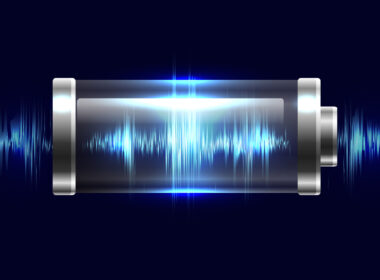

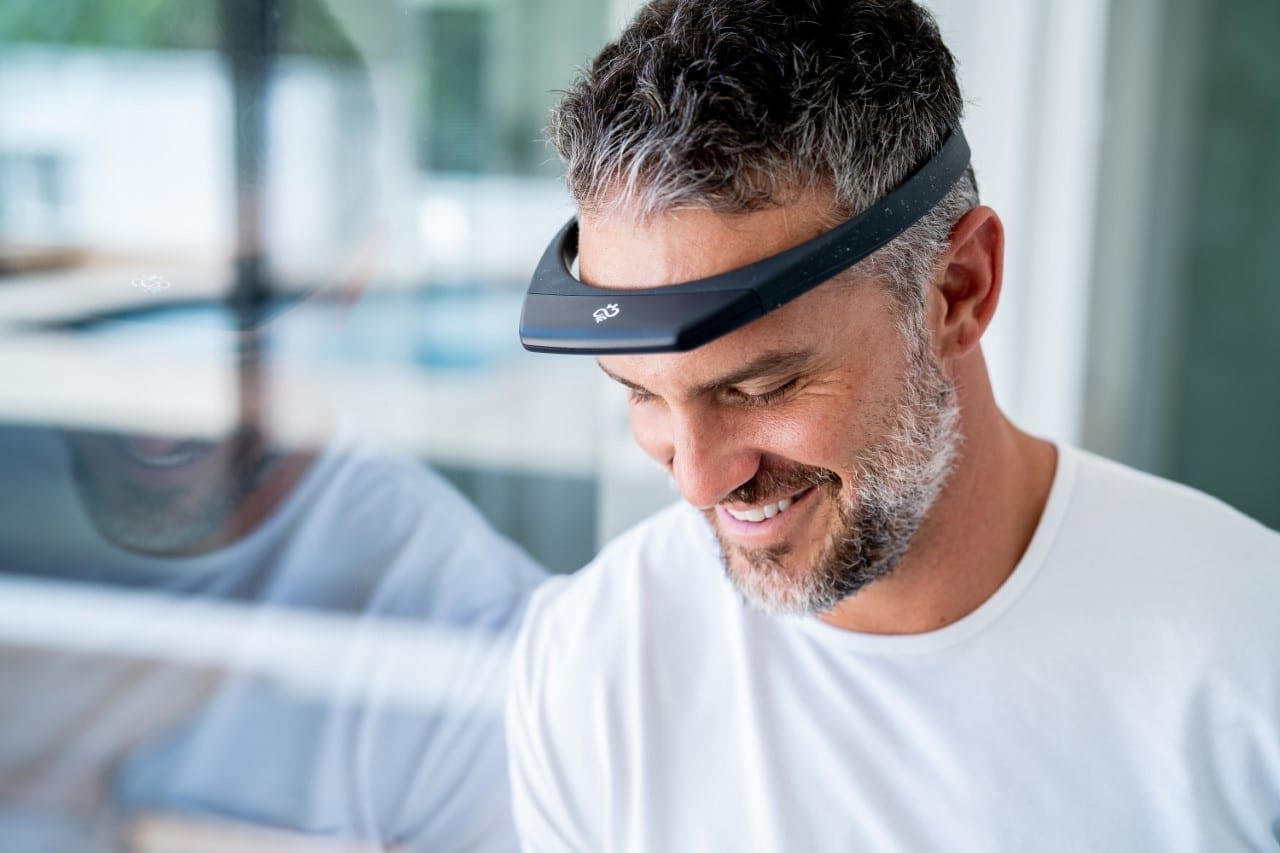

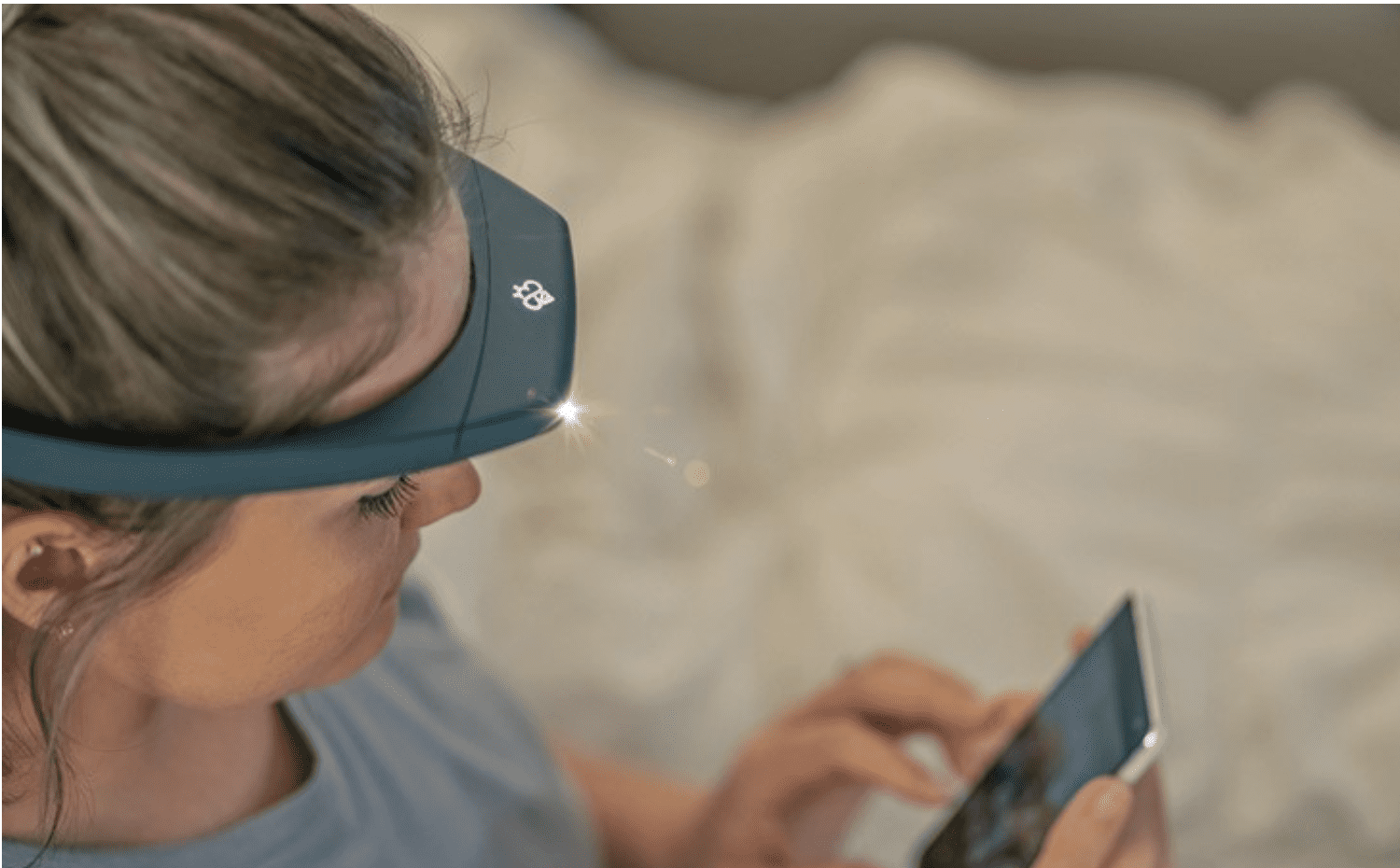


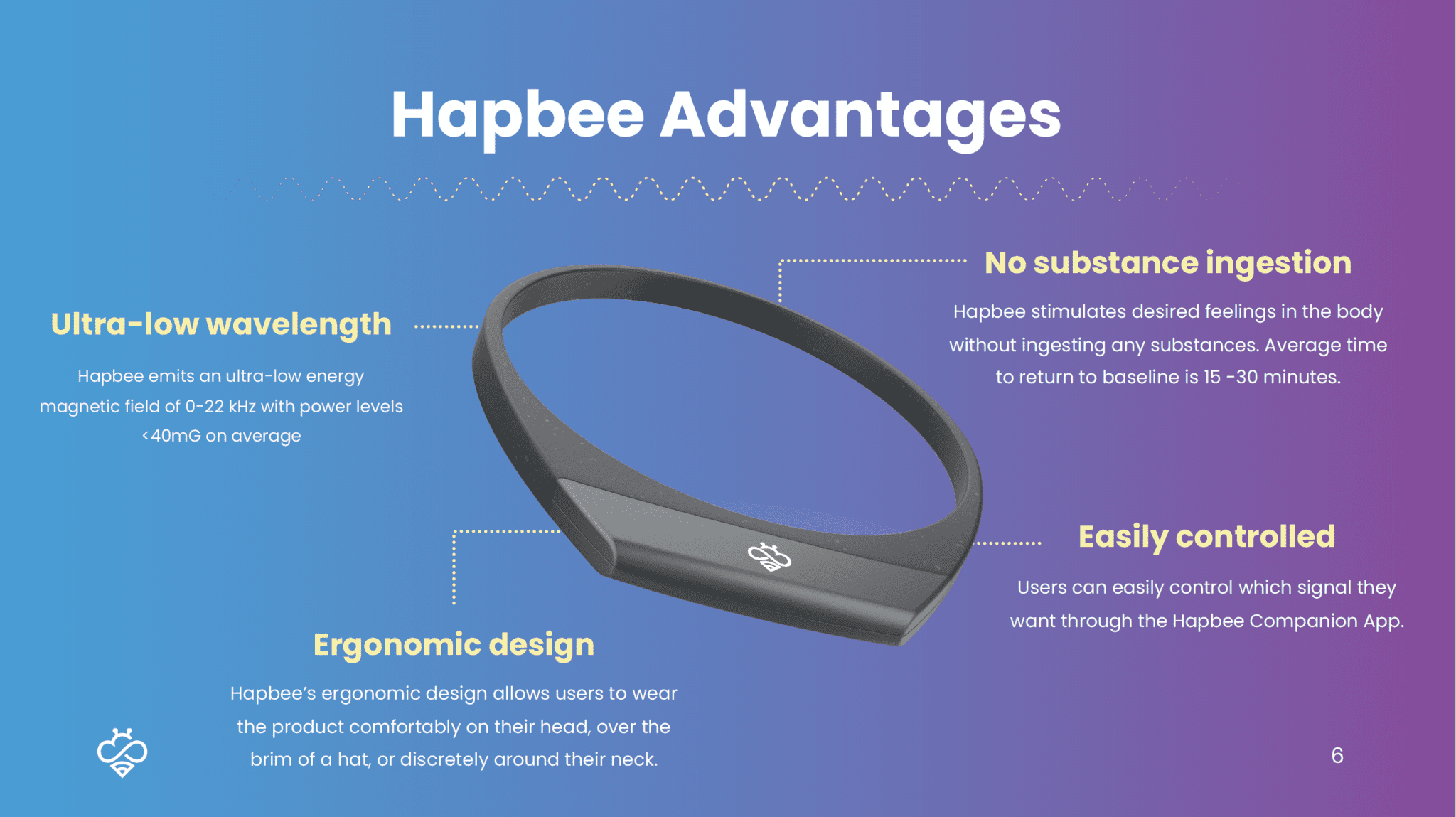
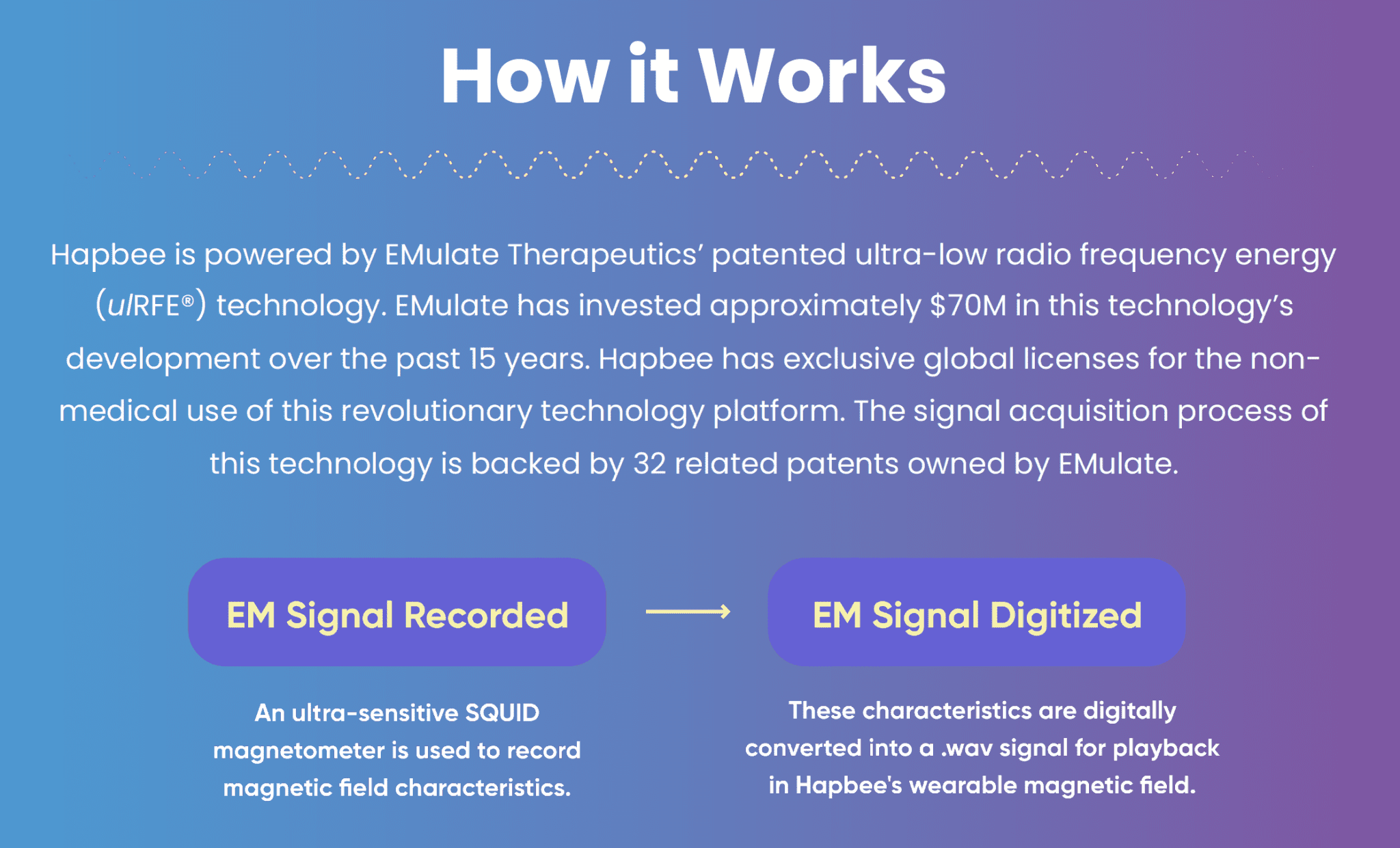
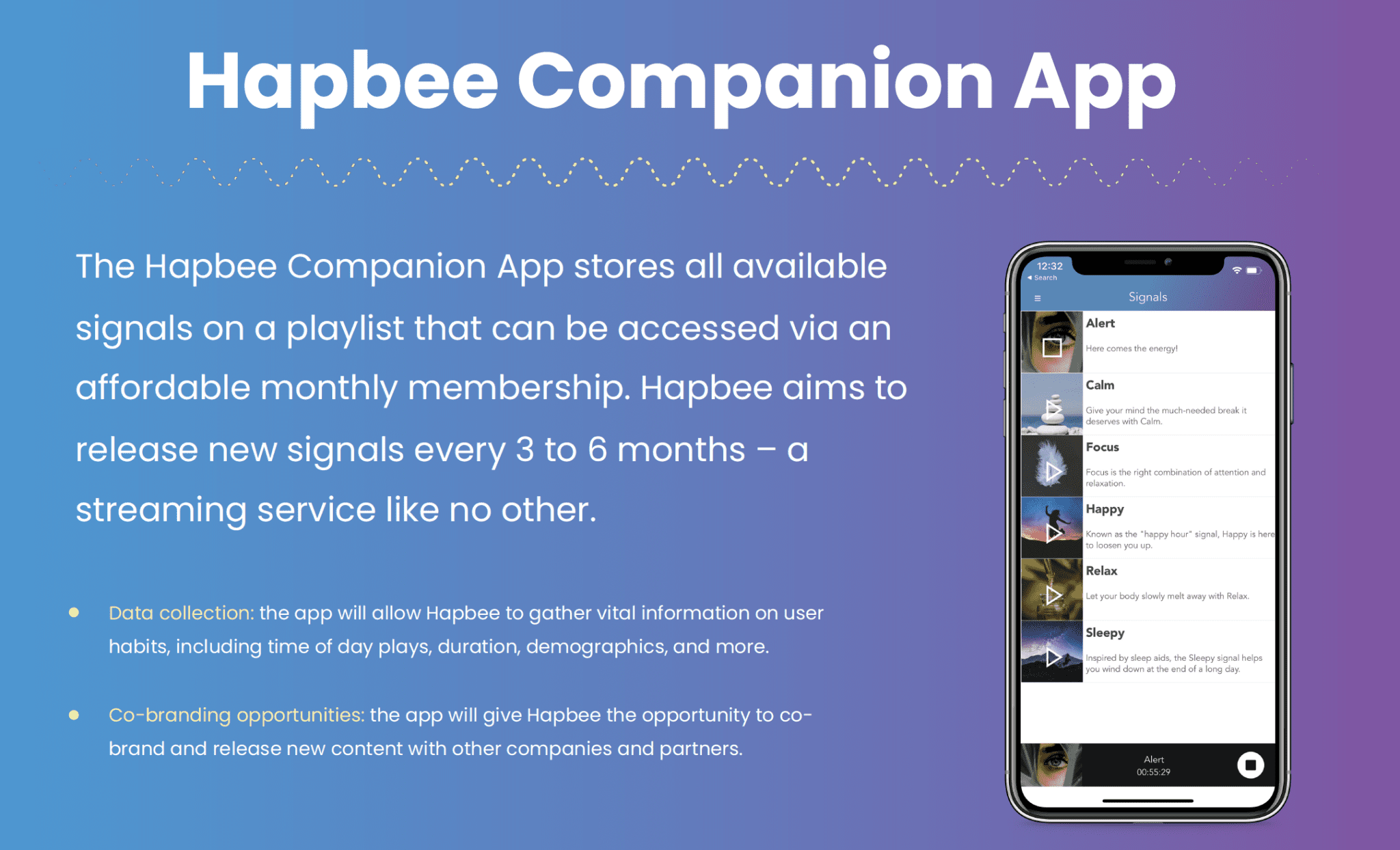
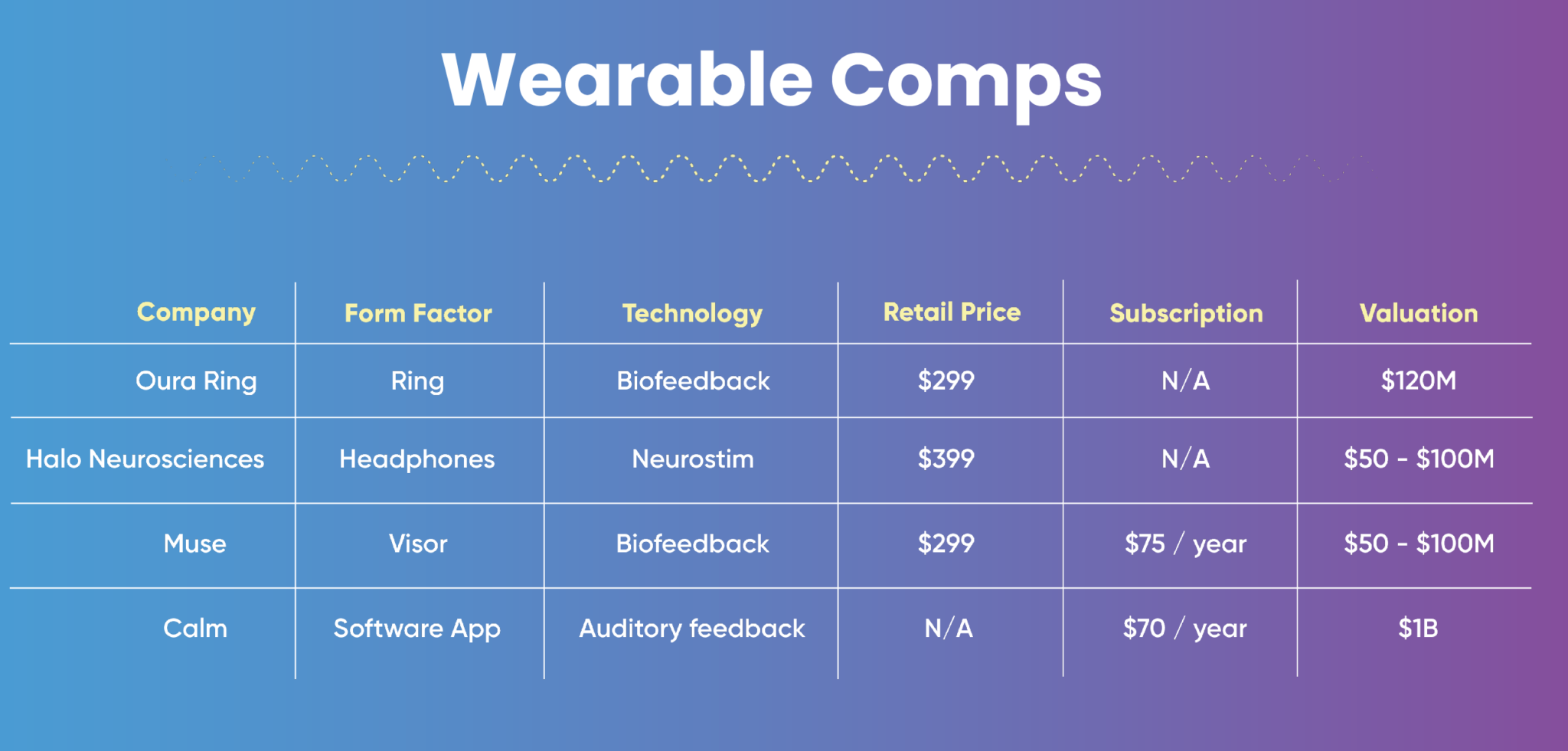
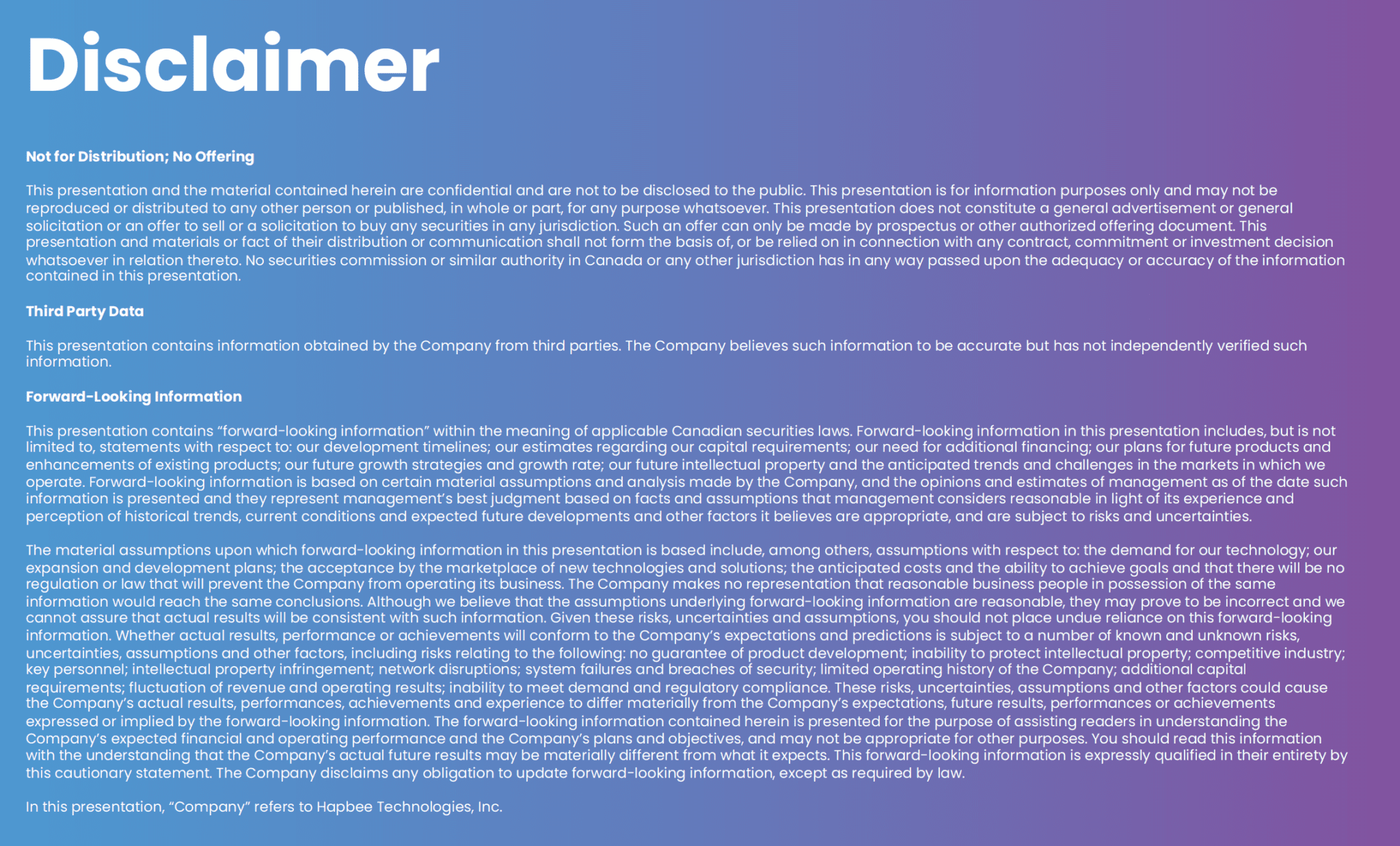

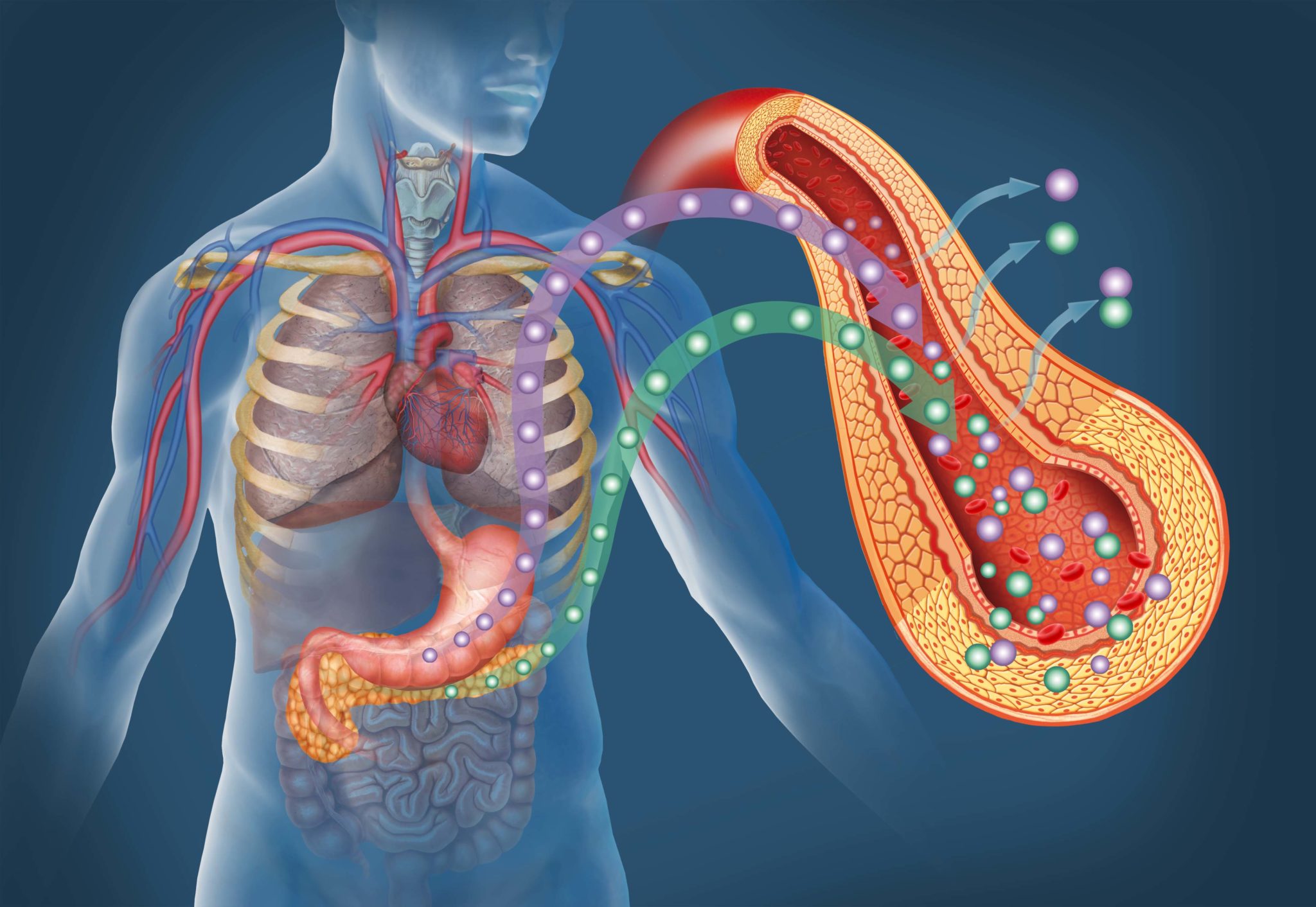


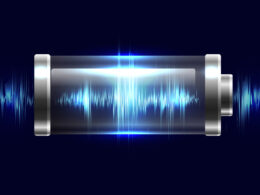

Looks like a good idea! I’ll want to try it to see for myself if it works as well as they say it does. I’m all for bio hacking though not a hardcore adept, but what about the mass market? Won’t they be worried about the effets of long term exposition to magnetic fields? Are there any studies about that? And what about conspiracy theorists, won’t they be worried about the gadget taking control of their brain? I think it is certainly a revolutionary device, but is the world ready for it yet?
products and companies rose or died on the minor aspect of timing
this one will be just another dead one, the mass market is easier to predict with super futuristic things than people assume, even VR / AR are technically going nowhere for years now,(after even Google had there hand deep into it) and those have nothing intrusive about them,
you are a great writer and under disguise marketer.
but I personally think this is why off
Ivan,
This is a good time to launch this product but the pandemic will be coming to an end for the most part, by the end of the year, if all goes as planned with the vaccines coming online.
What happens if this product takes off in the current pandemic and then things go back to a somewhat normal world.
Are people still going to need the Hapbee? Also, I think the price for the Hapbee is quite expensive for the average person, especially since most people will be recovering from high debt due to Covid 19.
I don’t think this stock is a going to take off in the current world due to it’s cost and also any long term effects the Hapbee could have on the brain, similar to what cell phones might have.
I won’t be buying this stock as I think there are lots of other stocks, especially in the Materials Sector which have much bigger upsides.
Best of Luck Ivan.
Well, after reading this, I came away with a totally different opinion than the three previous commenters.
I would first ask any of those gentlemen if they have been to or near Crestone, Co? I will just say that when I first visited there, I literally wanted to sell everything and go and live there…not kidding! I didnt know why i physically felt so….alive and supercharged there. And when i looked into the area, it seems that it is a magnetic vortex that may cause it. I just feel different when I am near there.
So, when I read this paper about Hapbee, I got extremely excited. I think it will be a very successful story. Let me say why i believe this. If I understand what the author is communicating here it seems like not only will the device and app be sending out the frequencies to the consumer, but it will also be recording the magnetic data we send out— that to me just means unlimited possibilities for the device! Because, as the user numbers grow, so will the dataset the company has to work with…and the more data you have, then of course the more precise of an output you will have from being able to tighten up the “controls” for each “feeling” that is sent….hopefully that makes sense and I am not too far off?
Anyway, so just imagine what it could do…Want to feel sexy? No need to ingest pills for that anymore…Hapbee could get ya in the mood for lovin! I mean, really! This, to me, has literally endless possibilities!
And the previous poster all spoke about how during covid mayve not so great of an investment? Well, again…I am of the totally opposite opinion! Just think…marketing it would be easy! Covid isolation and longing for a time when you were happy? You can have the same feeling while completely alone, that you would receive from being in the company of actual other people.!
Lord, I think this is a game changer and am bowled-over by the idea and applications possible for the technology!
I need this. I will test it out anyway I can.
I consider it will be more useful in schizophrenia, epilepsy, autism.
Such a nice calm relaxing blog